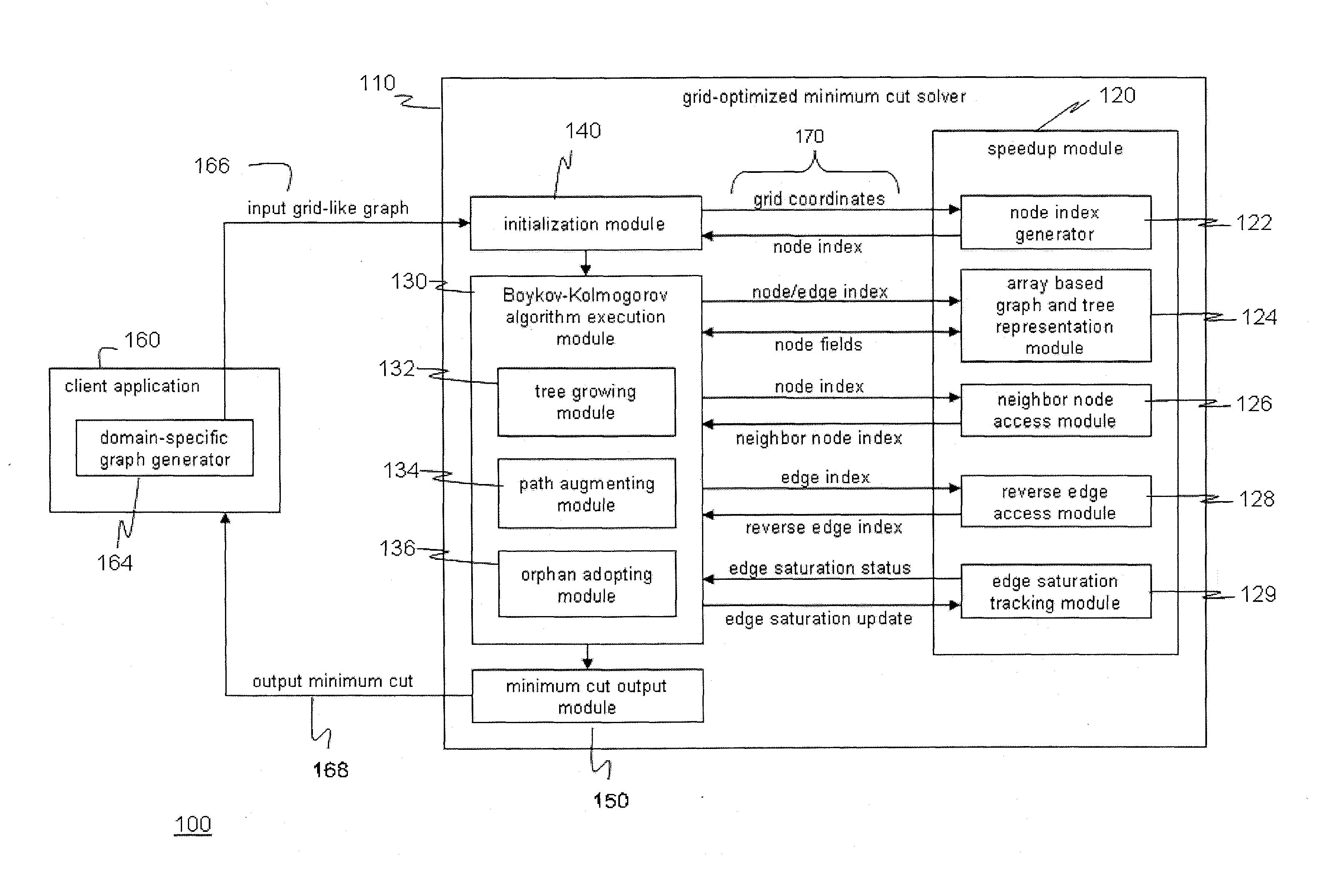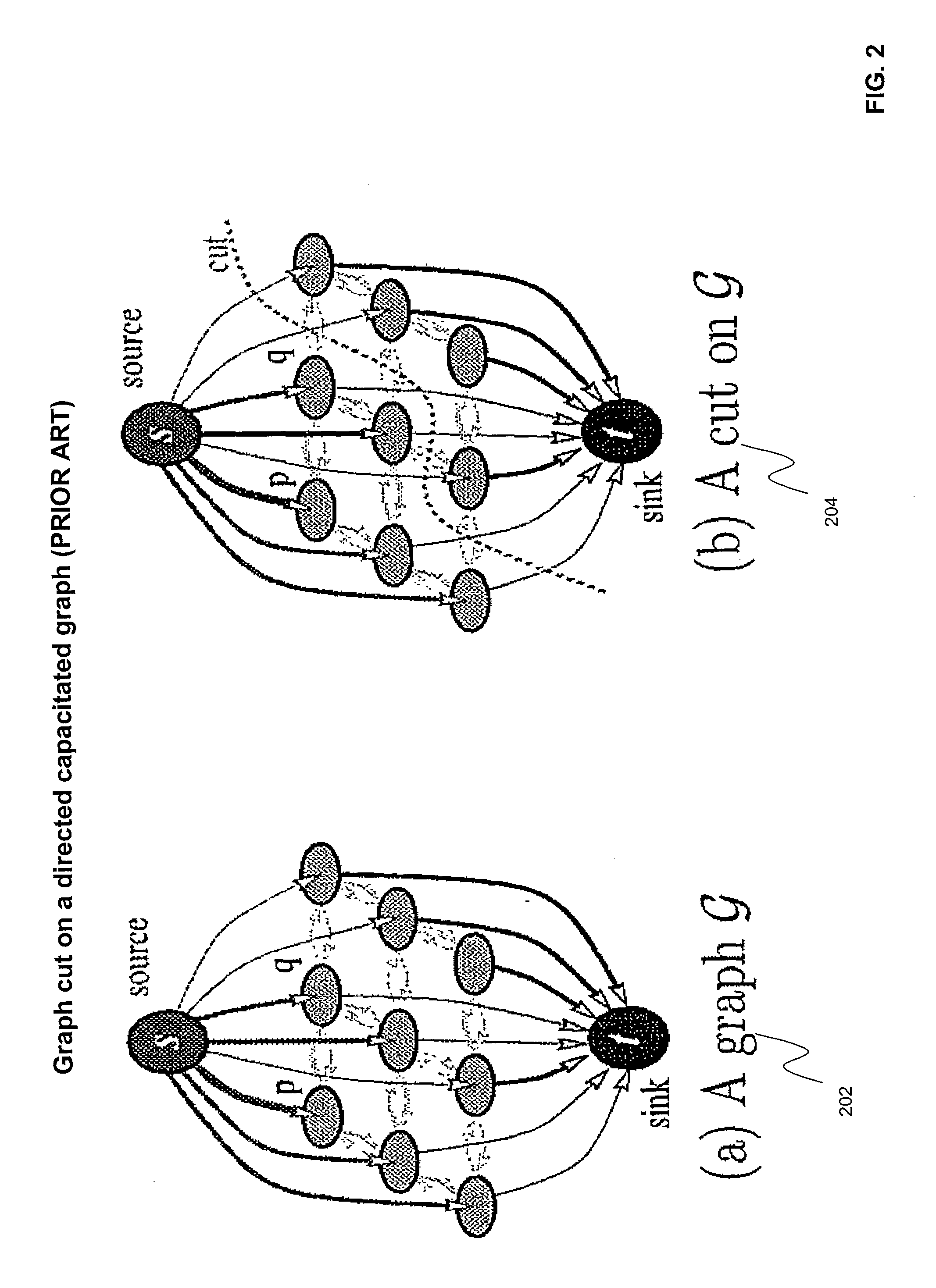Optimizing computation of minimum cut in graphs with grid topology
a graph and topology technology, applied in the field of finding minimum cuts in graphs, can solve the problems of existing implementations of the bk algorithm, significant challenges for application developers and interactive systems, poor performance on grid-like graphs, etc., to speed up the computation of minimum cuts, avoid latencies, and reduce memory bandwidth bottlenecks
- Summary
- Abstract
- Description
- Claims
- Application Information
AI Technical Summary
Benefits of technology
Problems solved by technology
Method used
Image
Examples
system embodiment
[0040]FIG. 1 illustrates an example system 100 for optimizing computation of minimum cut in graphs according to an embodiment of the invention. System 100 includes a grid-optimized minimum cut solver 110 and client application 160. In an embodiment client application 160 can be configured to run on one or more client devices (not shown), that are coupled to the grid-optimized minimum cut solver 110 via a network (not shown). As will be appreciated by persons skilled in the relevant art(s), the network coupling the grid-optimized minimum cut solver 110 to one or more client devices hosting client application 160 may be, but is not limited to, a wireless or wired public or private network, a local area network (LAN), a wide area network (WAN), or the Internet.
[0041]According to embodiments, system 100 depicted in FIG. 1 utilizes the following elements: compact, static data structures; a cache-aware memory layout; and implicit branchless addressing. Each of these elements is described ...
PUM
 Login to View More
Login to View More Abstract
Description
Claims
Application Information
 Login to View More
Login to View More - R&D
- Intellectual Property
- Life Sciences
- Materials
- Tech Scout
- Unparalleled Data Quality
- Higher Quality Content
- 60% Fewer Hallucinations
Browse by: Latest US Patents, China's latest patents, Technical Efficacy Thesaurus, Application Domain, Technology Topic, Popular Technical Reports.
© 2025 PatSnap. All rights reserved.Legal|Privacy policy|Modern Slavery Act Transparency Statement|Sitemap|About US| Contact US: help@patsnap.com



